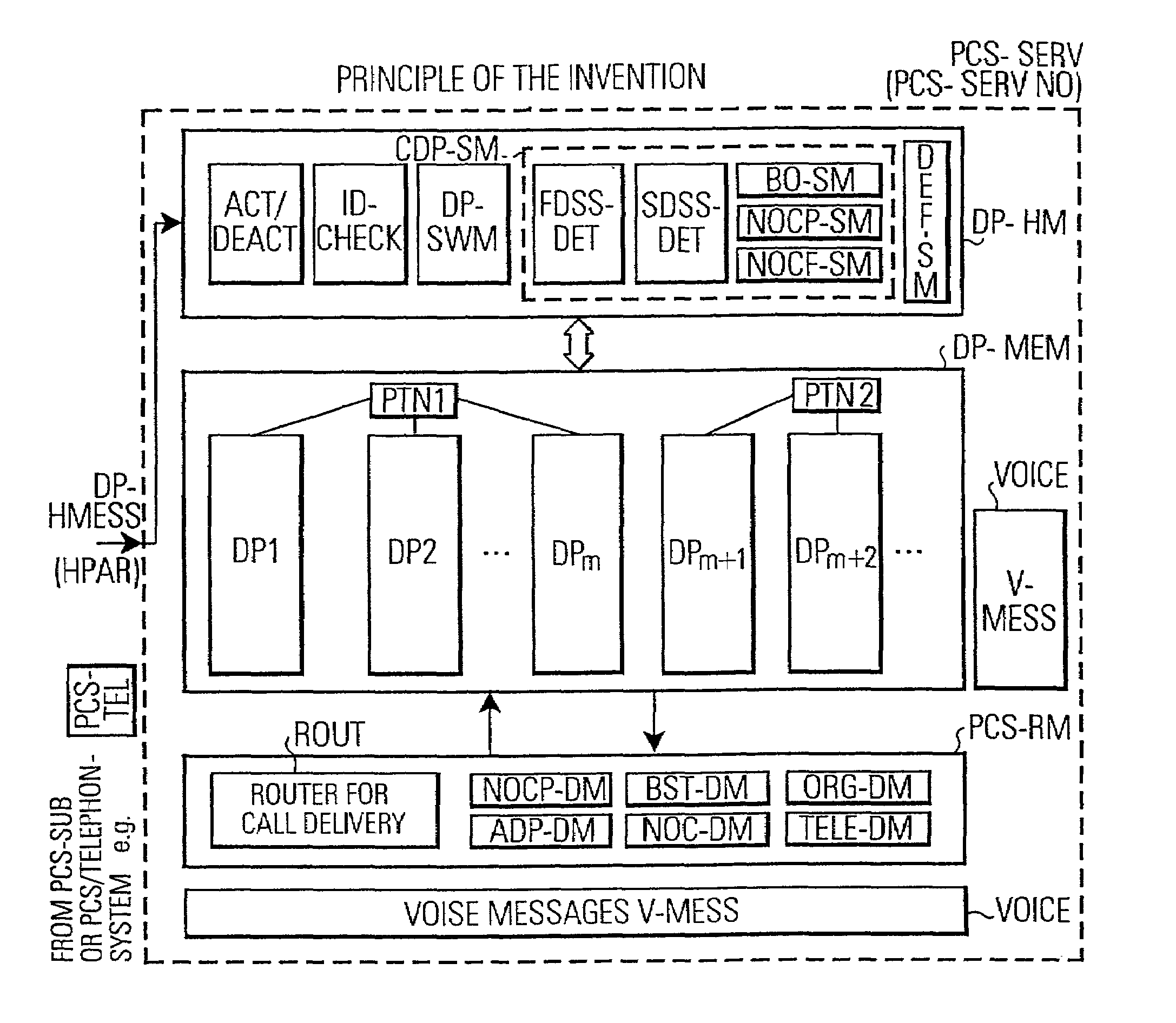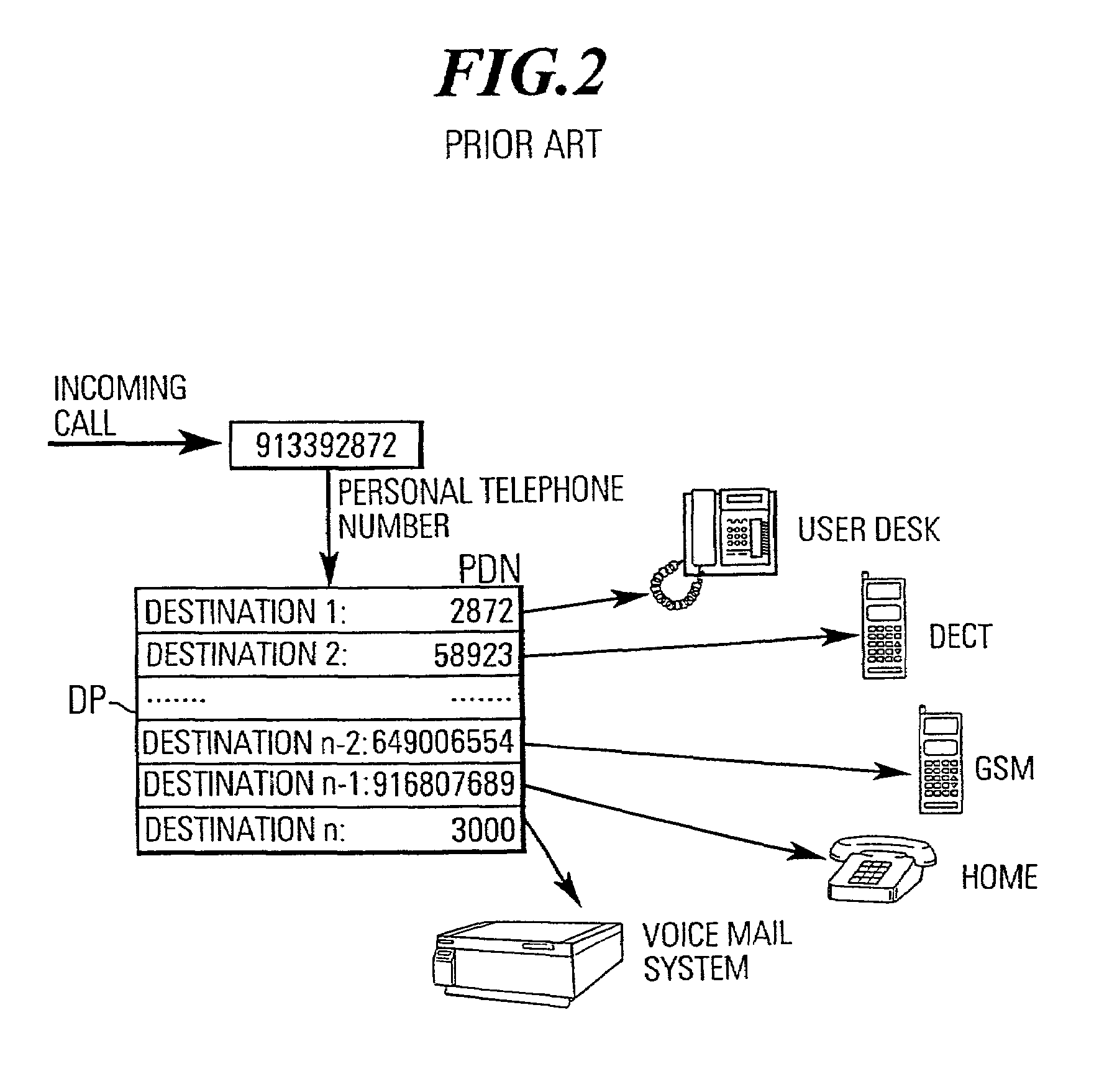Personal communication system
a communication system and personal communication technology, applied in the field of personal communication systems, can solve the problems of not being able to activate/deactivate his/her personal communication service in a flexible user-orientated way, not being able to allow a flexible control or handling of the destination, and not being able to achieve the effect of increasing the flexibility of the pc server
- Summary
- Abstract
- Description
- Claims
- Application Information
AI Technical Summary
Benefits of technology
Problems solved by technology
Method used
Image
Examples
first embodiment (
Selection and Activation / Deactivation)
[0184]According to a first embodiment of the invention as explained above, the PCS destination profile handling means DP-HM comprises an activation / deactivation means ACT / DACT for selecting and activating / deactivating a predetermined one of said destination location profiles DPm in said PCS destination profile memory DP-MEM in response to a selection / activation / deactivation handling parameter SEL / ACT / DACT in the destination profile handling message DP-HMESS which indicates a predetermined destination location profile DPm to be selected / activated / deactivated as shown in FIGS. 5a, 6.
[0185]As shown in FIG. 6, in step ST11 the destination profile handling message DP-HMESS including a selection / activation / deactivation handling parameter SEL / ACT / DACT is sent to the PCS server. In step ST21 the ACT / DACT means determines the desired action (activation / deactivation) and the number of the selected profile DP which is to be activated / deactivated on the bas...
second embodiment (
Switching of Profiles)
[0191]According to the second embodiment of the invention, the destination profile handling means DP-HM comprises a destination profile switching means DP-SWM (as shown in FIG. 5a) for switching between predetermined ones of said destination profiles DPm in said PCS destination profile memory DPM in response to a destination profile switching parameter DP-SWP contained in the destination profile handling message DP-HMESS.
[0192]As shown in FIG. 7, in step ST12 the PCS user sends a DP-HMESS message including a switching parameter DP-SWP. In step ST22 the DP-SWM means determines the profile to be switched to on the basis of the DP-SWP parameter. In step ST23 the switching means DP-SWM switches to the indicated destination profile.
[0193]Therefore, the PCS subscriber is provided with the possibility to change the selected sequence by a procedure again dialed from the PCS user telephone. The second embodiment assumes that possible sequences in the destination profile...
third embodiment (
Call Distribution (Origin) Parameters)
[0198]As explained above, in a destination profile a sequential set of destination locations (destination location numbers) are included and the PCS routing means will route the calls sequentially to the destination locations as indicated by the destination profile. However, this does not allow the user to indicate specific destinations in the destination profile which should be used dependent on specific call distribution criteria, for example the specific origin of a call placed by the calling party.
[0199]According to the invention the destination profile handling means DP-HM comprises a call distribution parameter setting means CDP-SM for setting call distribution parameters in said one or more destination profiles. These call distribution parameters can be set via the handling message being issued by the system dependent on operating conditions of said PCS system and / or said telephone system or by the PCS user.
[0200]The all distribution para...
PUM
 Login to View More
Login to View More Abstract
Description
Claims
Application Information
 Login to View More
Login to View More - R&D
- Intellectual Property
- Life Sciences
- Materials
- Tech Scout
- Unparalleled Data Quality
- Higher Quality Content
- 60% Fewer Hallucinations
Browse by: Latest US Patents, China's latest patents, Technical Efficacy Thesaurus, Application Domain, Technology Topic, Popular Technical Reports.
© 2025 PatSnap. All rights reserved.Legal|Privacy policy|Modern Slavery Act Transparency Statement|Sitemap|About US| Contact US: help@patsnap.com



